Dénia today has many symbolic elements with which it is recognized in many places. The red prawn is one of them, without a doubt. Also our coastline, the Montgo, of course, and even some streets like Marqués de Campo. The Castle, however, is surely the most emblematic. So much so that it is part of our shield. But, for a time there was one that stood out above (in every way) the castle: the Sagrat Cor monument.
Dénia Castle continues to shine today in all its splendor, partly due to the ambitious rehabilitation work that has been carried out over the years. However, it has not always been so. The nineteenth century was perhaps the darkest of the monument. The Napoleonic assault during the French invasion left its structure very deteriorated. Furthermore, in 1859 the troops were urged to abandon the fortress and destroy it.
Since this was already an unusable property and whose collapse seemed a fact, the State decided to auction it off. Yes, the monument of extremely important historical and cultural value was going to pass into private hands. Luckily, what could have been his downfall, however, managed to preserve his future.
The privatization of the Castle
A group of Dianenses acquired the property of the Castle. There were 20 neighbors, who prevented it from ending up destroyed. With this change of owners, his land became an agricultural estate oriented to the cultivation of vines and the production of raisins. During this time, terraces were set up for agriculture and retaining walls were created.
At this time, which lasted until 1952 when the City Council recovered ownership of the castle, the creation of the most imposing monument in the city was undertaken, which prevailed over the rest of the symbology for a few years. For a few years.
Raising the new monument of Dénia
In 1926 the first stone was laid for what would become the monument to the Sacred heart. It was built on the top of the Castle, a point carefully chosen so that it would be visible from all over Dénia. Hundreds of neighbors took part in the project, helping in the costly task of transporting the materials to the site. The inauguration, on May 3, 1927, was quite a party that attracted a multitude of people.
The majestic monument, designed by the Valencian professor of Fine Arts Salvador Rubio, was completed with a chapel at the base and a small altar with a Tabernacle. It also had two bells to announce religious services. The image of the Sacred Heart, in neo-Gothic style, was placed facing the town and the Montgó. In addition, to make it clearly visible, two reflectors were installed to illuminate it on certain dates and on the first Friday of each month. This caused a great sensation among the Dianenses.
Twilight of Sagrat Cor
However, the emblem was short-lived, becoming history a decade after the foundation stone was laid. The Sagrat Cor monument was demolished as a result of the Civil War at the beginning of August 1936. However, no one bothered to make it disappear, lying in a more than recognizable state on the floor of the Castle for decades.
They remained in the same place where they fell until 1974, when the administration decided to remove them to the courtyard of the Carmelitas school. For a time, the possibility of rebuilding it on the premises was considered, but the idea was discarded and the remains ended up being transferred to a small abandoned plot between the Santa Llúcia residence and the Alfa y Omega school.
The trail of the remains of the monument was soon lost, and what was once the most majestic symbol of the city was completely forgotten. In fact, since the 80s, the location of what remained of the image has been completely lost track of. But this one was still on the same land, away from everything, between large weeds and rocks from which they are hardly differentiated.
To this day they are still there, abandoned, but there is little left to recognize. The monument has been completely lost, deteriorated to the point of being almost indistinguishable in a wasteland full of other rocks with less to count.
In 2012 the Department of Culture of the Dénia City Council announced that the remains would be recovered to preserve them after the publication of his whereabouts by this newspaper. Despite this, the initiative never got anywhere. Such a determining symbol of Dénia's past will continue to be just that, a simple past. In the undergrowth they rest, seemingly forever.

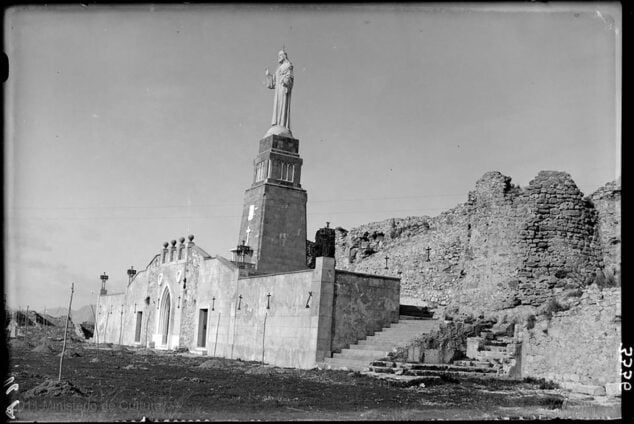
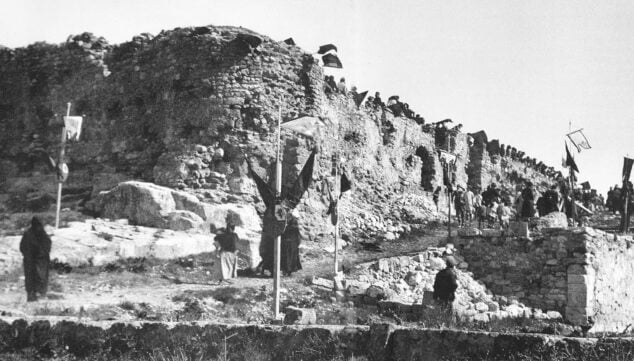
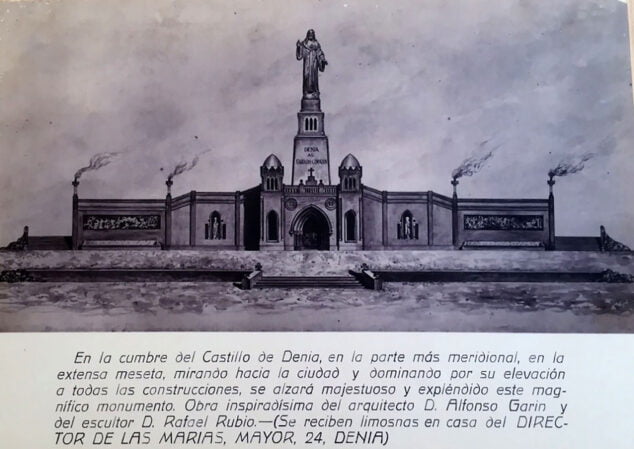
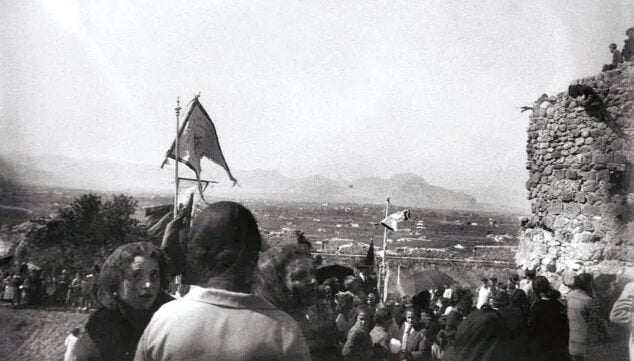
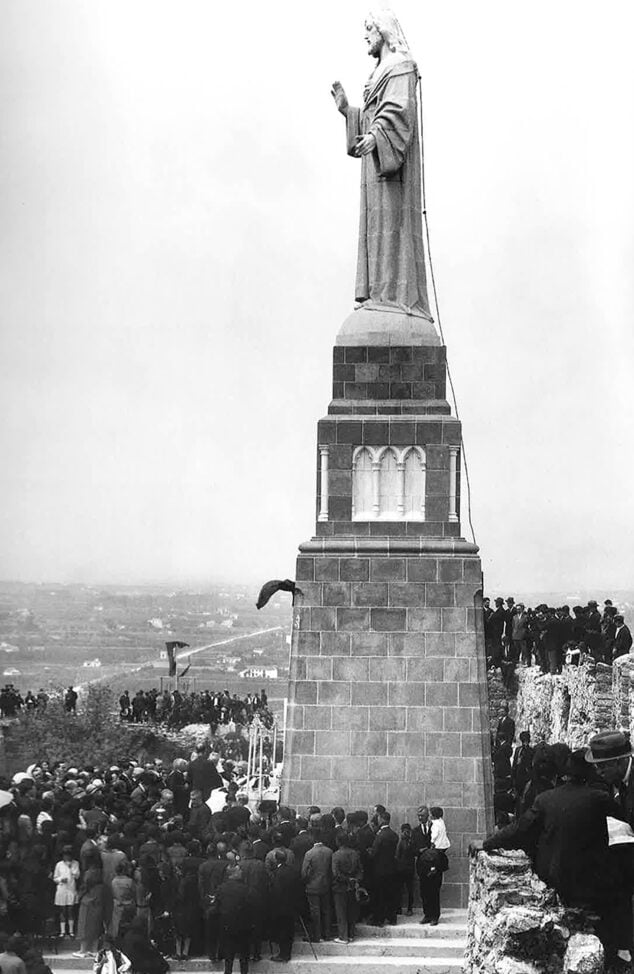
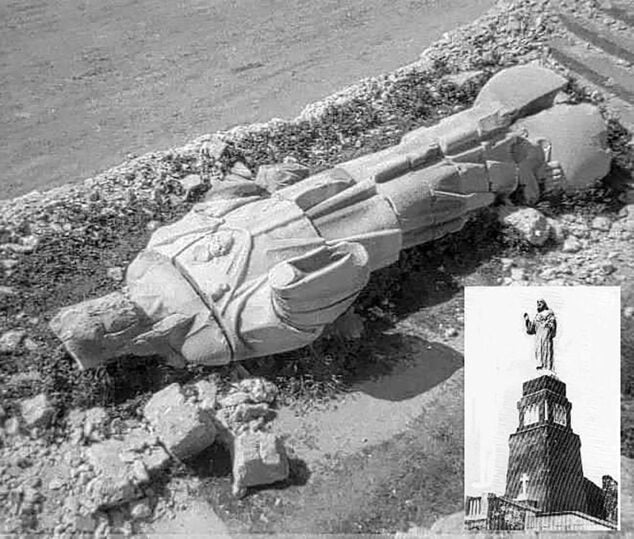
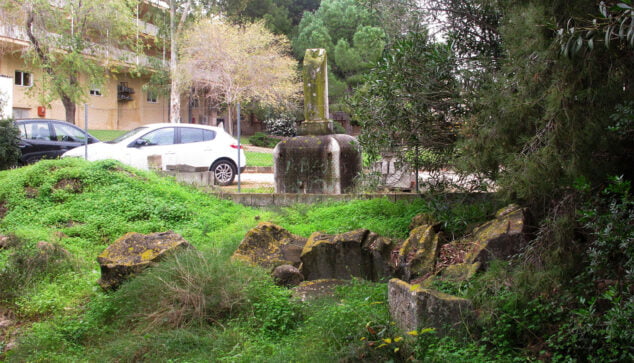
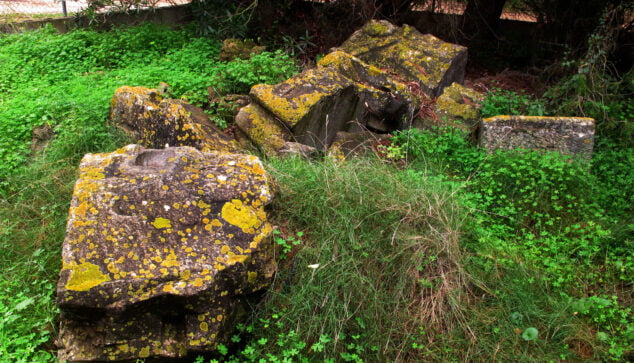
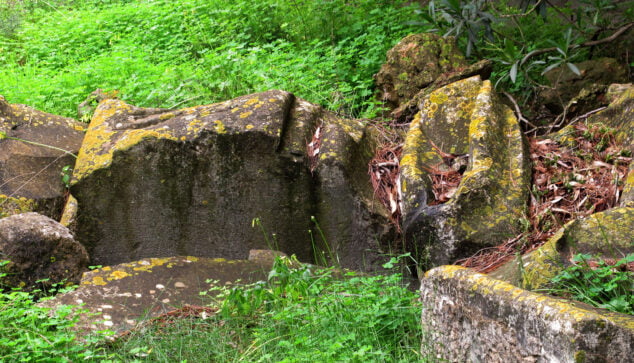






Let them paint it with the colors of the rainbow and that's it, and also free subsidized or whatever.
Why was it not solved during the Franco regime? From 1939 to 1975 are many years to have done it.
But would you really like to see that statue in the city? Totally out of context!
It would also ruin the silhouette of the city with its Castle and its Montgó, I say
Why not? Like the Christ the Redeemer in Rio de Janeiro.
Like everything they don't like or don't like, or because of laziness and laziness, it ends up abandoned, lying in an open field where weeds and garbage take care of covering it up. Then they talk to you about history, culture, tradition and......festivities.
«….The Castle of Dénia continues to shine today in all its splendor,…»
Howrrrr? But if there is no Castle anymore!! The King is naked.
Let's see if we stop exaggerating. He is a figure who was only in the castle for 9 years. No tradition, no culture. If they want to get it back, put it in a religious compound and leave public places alone.
Antonio, a public place is, for example, one of the churches in Dénia, and not for that reason, you have to take them and lock them up in a religious enclosure.
You do not go and period
Difficult to comment on this matter.
Some seem to have longing for Denia with reminiscences of centuries ago. Stopped works, nonsense, ... etc by some stone, what those who live from this call walls or others. See the part of the wall in the area of the music school, covered by rusty beams and a concrete block. Where will be the enlightened person who decided what is ridiculed by visitors who come to see, ugly, very ugly.
In the case of this sculpture, it seems that there are no concerns for those who have set themselves up as defenders of I don't know what memory. It seems like we are embarrassed to defend what is ours, culture, beliefs, traditions. What little imagination of those who by a handful of votes forget where we are from, and where they have to go. Let's hope that when the need comes from the hand of the person the image represents, they will be treated in the same way. It is never too late to be what one is.
regards
In 1936, who was in charge in Dénia?
Who's in charge today?? …
Some barbarians had the brilliant idea of erasing all the signs that reminded of the Christian/Catholic/national culture and one of their actions consisted of demolishing that monument, perhaps because they had not been able to assassinate D. Pedro, parish priest in Dénia, and other clergymen who They escaped and hid in the shelter of some neighbors and good people from the town and its surroundings.
Pretending that the heirs of those heartless now repair their misdeeds is asking for pears from the elm. And more so now that with their law they are trying to erase the true memory that our parents and grandparents have told us.
The only solution would be through a popular civic initiative.
Why was it not solved during the Franco regime? From 1939 to 1975 are many years to have done it.
I remember as a child, having been jumping and playing on these pieces, when they were in the courtyard of the Carmelitas school. Why didn't they let it be rebuilt in that center? Can it still be restored?
I hope that the city council does something and that monument is recovered
Shame should I give all those people who run councils, my interior and other culture, culture? That is what they lack, of course, what economic benefit does it bring them to place a statue again? NOTHING, but for other acts that are totally dispensable there is money... as if we didn't already know them. What a shame they uncover themselves.
About the Sagrat Cor
Works are stopped due to the appearance of some stone, pots are collected, etc.. everything counts, and it is acceptably good, but an emblem of the city of Denia cannot be recovered and restored in its place?
Can you imagine that the Christ of Corcovado fell and was abandoned, the Lord who cares and watches over the city, does not have in the city and its citizens the answer for him to recover and look at the population and the sea, as an emblem and protector? How sad
Something will have to be done, give your opinion and move concerns that allow the protector of Denia to be recovered
Luck
I agree with you, it's a shame, when I was little my grandmother told me about that monument, it's sad that parts of Dénia's history are lost like this
I remember as a child, having been jumping and playing on these pieces, when they were in the courtyard of the Carmelitas school. Why didn't they let it be rebuilt in that center? Can it still be recovered?
I hope that the city council does something and that monument is recovered
What a great pity about the statue of Denia... it's a pity for the sad story. Greetings